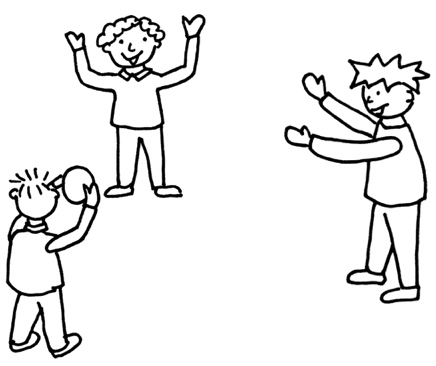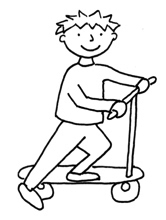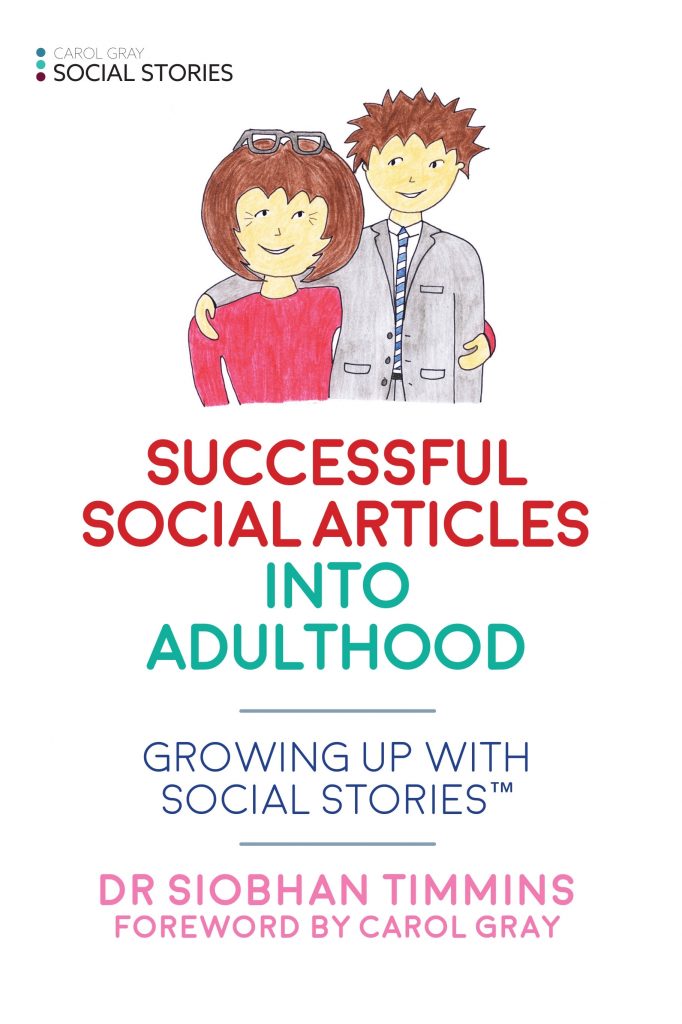Dr Siobhan Timmins is an approved Satellite Trainer in Social Stories™ and offers training in the approach to parents, professionals, and NHS staff. She is an Associated Specialist at a special school in Essex. Her latest book, Successful Social Articles into Adulthood, builds on her range of social stories books for all ages.
How did you come to work in Social Stories?

I was working as a junior doctor in developmental paediatrics when l stopped to have my family. My middle son Mark was identified as autistic when he was two years old. On searching for information to help me understand him I learned about Social Stories in 1997 from Carol Gray and began writing them for him. They were the first strategy I had come across that was completely respectful of the different yet equally valid perspective of the autistic child or adult. They were so successful I have never stopped! I have been writing them for the last 23 years, initially for him then for many other autistic children and adults.
With the approval of Carol Gray, who devised and developed the approach, I established the Social Stories Satellite Service for Essex at Market Field School in 2012 and deliver training there each term. I also provide training for the NAS and for any organisation wishing to train staff or parents nationally. I am a member of Carol Gray’s Team Social Stories and have now just published my fourth book on Social Stories with Jessica Kingsley.
What is a Social Story?
A Social Story is a story that shares social information with an autistic child or adult in an accessible way, respectful of their different processing and perspective of the world. It is written in a specific way following specific criteria which help it to be meaningful, safe, patient, non-judgemental and reassuring. Some people misunderstand and misuse Social Stories and use them to tell children what they are doing wrong and then what to do in a very directive way. These are not genuine Social Stories.
A Social Story’s aim is to improve the child or adult’s understanding by sharing information. With improved social understanding clarity and predictability is re-established and a great deal of anxiety relieved. In my experience the autistic person, more often than not, chooses another response as a direct result of having all the information that is just naturally there for their neurotypical peers.

Are Social Stories just for children?
Social Stories are often thought of as a strategy to help just children, but they can be and are used successfully for all ages and abilities, provided the person writing it takes into consideration the individual it is being written for, adapting it to their language level, understanding, interests, and attention span.
I began writing Social Stories with my son when he was non-verbal and not reading. The original Stories were mainly illustrations with one sentence of three words under each picture. He could not read so the very simple sentences ensured that the same words were read or said by anyone sharing the Story with him. As he developed more language it was included at his understanding level within a Story. His Stories grew up with him. Today I send him Social Articles, the adult form of Social Stories, as emails, in Times New Roman font with a double column format like a newspaper or research article.
I wrote the four books to demonstrate that Social Stories/Articles can be used for all ages across the lifespan. This is why the series is called, ‘Growing Up with Social Stories.’
Tell me about this latest book in the series – Successful Social Articles into Adulthood?
This last book addresses the entry into the adult world addressing the confusion posed by job specifications, CVs, interviews and common difficulties that occur within the workplace such as being on time, requesting annual leave, attending an appraisal, and coping with feeling unsettled or anxious.
Over the past few years a growing body of research has highlighted a real concern for both the mental and physical health in autistic young people. With this in mind I wanted to include successful Articles on how to access healthcare, such as annual check-ups, what to do when feeling unwell, identifying which part of the body may need attention, booking an appointment, and taking medication. Articles sharing information on mental health describing low moods, depression and anxiety as well as when to access help and who to tell are also included.
The final chapter of the book looks at life story and begins to address understanding the inevitable bereavement we must all face in life. For people acutely sensitive to change bereavement has an extra painful dimension. There is a need for preparation and explanation before the time comes to deal with the loss of a family member. The chapter offers a way of beginning to think about the processes of life and death using Social Articles.
Autistic people are all unique – how can Social Stories and Articles help?
This is what I love about the Social Stories approach and what makes it different from many other interventions – each Story or Article is absolutely individualised for each unique person in their unique situation. This is one of the foundation philosophies of Social Stories! To do this it is really important that the author understands the autistic person’s unique perspective of the situation before starting to write. This means effort and time must be given to exploring the autistic person’s take on the situation, and observing the situation from both the autistic and non-autistic point of view. If this is done then the Stories or Articles will provide the specific information needed. This adaptability of the approach for the individual makes it incredibly useful for all ages and abilities.
Are there any topics they cannot address?

Although Social Stories are required to be positive in tone this does not mean that negative topics like bullying, divorce, and bereavement cannot be addressed. Social Stories describe life and that of course includes both positive and negative topics. They are however addressed in a specific way so that the autistic person is both informed and reassured and the ten criteria guide authors to do this safely and effectively. Bereavement is an example of a topic that can be addressed using Social Stories and Articles and is included in this last book.
Can they be used proactively?
Social Stories are often written to address a response that demonstrates that social information is missing. More often than not they are written after other methods have failed. I believe this misses an important use of Social Stories. Social Stories can and should be written and shared with autistic children and adults proactively to avoid a misunderstanding and to provide a level of predictability. The Stories and Articles are after all only ensuring that all people have the same level of social information as they go about their lives. This seems to be only fair to me. I am hoping that people who work with, and alongside autistic people will read the books and try to use them proactively with their young and old people.
Where can parents and professionals learn to write one?
It is important to access genuine Social Story training because this sets you up to write effective and safe stories. It also teaches you to recognise what is, and what is not a genuine Social Story. There are Carol Gray approved training workshops for parents and professionals going on through all the UK and Ireland Social Story Satellites and through the NAS. There are some useful links below.
If you would like to read more articles like this and get the latest news and offers on our books about autism, why not join our mailing list? We can send information by email or post as you prefer. You may also be interested in liking our Autism, Asperger’s and related conditions Facebook page.
